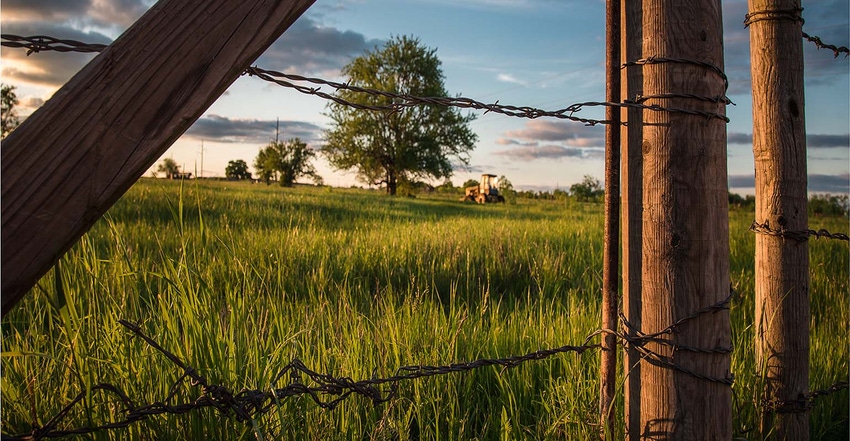Free report offers tips for avoiding cattle fencing mistakes
7 common cattle fencing mistakes is an in-depth look at key factors that can help ranchers keep animals contained.
September 21, 2022

The beauty of wide-open spaces is compelling, but ranchers know controlling and maintaining cattle requires fences. And while it sounds simple, proper fencing can challenge even veteran producers.
In this revised report from Farm Progress, you’ll find valuable information for avoiding common mistakes.
The resources for this report include Jim Gerrish, American GrazingLands Services LLC, May, Idaho, a well-known grazing expert who has plenty of experience working with fencing challenges.
We also sought help from Kevin Derynck, a Gallagher territory manager based in Keystone, S.D. They offered their insights on the topic.
Titled 7 common cattle fencing mistakes, the report digs in on key areas you can address early to avoid trouble.
And at each step, the report does more than identify the problem. You’ll find useful tips for fixing the problem (and for avoiding it in future fence builds).
Here’s a rundown of the key sections in this special report.
Corner posts
It sounds simple, the corner post is a critical part of any fence design, yet size and installation depth are two key common problems.
This is a top mistake in fencing, sizing corner posts too small or not putting them deep enough into the ground.
And this is a problem not only for barbed-wire fences but a challenge for high-tensile and woven wire fences too.
Download 7 common cattle fencing mistakes
In this section you’ll learn about the right post diameter based on the strength of the fence and gain insights on ways to fix existing corner posts that are just not up to snuff for your operation.
Post spacing
This is a question you may not always ask yourself: How far apart should fence posts be? According to Gerrish and Derynck, advise that fencers install too many posts.
That might surprise some readers given how much fun it is to dig fence post holes, but it happens.
They recommend a standard separation for fence posts in the report and include thoughts on spacing for electric fencing too.
Note that the fencepost spacing of the past has changed with new materials and insights on effectiveness. What was once one post every rod length, has changed considerably.
This section offers more realistic distances for use.
Energizer size
Electric fence has revolutionized cattle and pasture management, yet how much energy should you put through that electric fence to be effective in keeping cattle where you want them?
In this section there’s guidance on the amount of juice to put through a traditional fence, and thoughts about using a traditional high impedance energizer or a low-impedance design.
There are reasons to use either in different situations and the report offers tips to help make the decision. The key is putting the right juice through the right distance of fencing.
Ground rod spacing
The ground rod is critical to effective electric fence use, but how much grounding do you need? There’s a basic rule of thumb for the amount of ground rod needed for an electric fence: 3 feet of ground rods per joule of energy output.
Get the free report – 7 common cattle fencing mistakes
The report offers insight on spacing those ground rods along a fence. The report looks at the right approach for that spacing – including why it makes more sense to spread grounding rods along the entire fence.
You’ll also find tips for the best type of ground rods to use for that electric fence.
Wildlife-proof fence
Raising cattle anywhere brings challenges with free-roaming wildlife that don’t have need for the artificial barrier. The challenge is to make sure your fence keeps cattle in but allows wildlife to move through.
Whether you’re talking about deer, moose or elk, there are fencing approaches that can help you reduce the need to head out for repairs.
This section offers some solid tips and design ideas to allow wildlife to pass through while keeping cattle contained.
Download this free report: 7 common cattle fencing mistakes
Gate openings
The electric fencing system is a boon to cattle containment, but sometimes you have to go through. This creates a need for a gate system, that still much conduct current. That’s not always easy.
In this section you can get tips on ways to create a gate that keeps cattle in and maintains current flow around the perimeter. And there’s even an idea to maintain current when the gate is open.
It’s an interesting tip that could save you a few headaches.
Post material
Just what should a fence post be made of? When you’re talking electric fencing perhaps its time to consider ditching the steel post. Both Gerrish and Derynck prefer avoiding the use of steel fence posts in an electric fence.
This can create a situation where you are relying on the insulator to keep your cattle fence from shorting out. Always a challenge.
The report offers alternative fence post material ideas for that electric fence that can help solve issues with busted insulators that can short out a steel-post fence design.
The focus is to keep current flowing around the fence and keep cattle in.
Click here to download the free report: 7 common cattle fencing mistakes
About the Author(s)
You May Also Like




.png?width=300&auto=webp&quality=80&disable=upscale)
